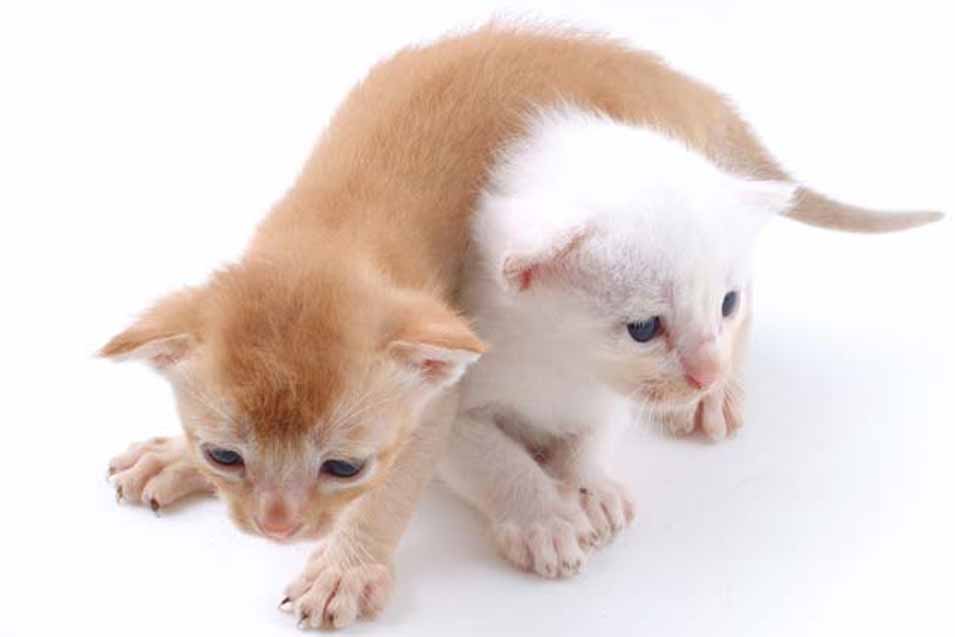
Few things can touch the heart of a cat lover like a newborn kitten that has been orphaned or abandoned. In order to survive, these helpless creatures will need intervention from someone who is willing to bottle feed her until she is old enough and strong enough to eat on her own.
As the kitten begins to grow, questions about how to wean a bottle fed kitten will arise. There is a right and a wrong way to do it. If the weaning process is not done correctly, it can cause health and emotional problems for the cat.
Properly weaning a kitten is not difficult; you just need to know what you are doing. In general, kittens will need to be bottle fed for between four and six weeks. That being said, it is important to remember that there is no exact timetable for kittens any more than there is for a human baby who is going from bottle to solid foods.
The first step in properly weaning a kitten is to begin to look for signs that the kitten is ready for that. When you are bottle feeding do you notice the kitten chewing on the nipple? If so, it may be time to start weaning.
Try putting a drop or two of the kitten formula on your finger. If the kitten seems interested and licks it off, then you can start weaning her.
One thing to keep in mind before beginning is that weaning is a process that is going to require a bit of patience on your part. No one would expect a baby to go from bottle to solid food in one day, and neither should that fast of a transition be expected from a cat.
Here are some tips for a successful transition process.
- Begin to think about weaning at four weeks of age. Do not attempt to wean the kitten any sooner than this. At the four week mark, you can begin to look for signs (such as the nipple chewing mentioned above) that the kitten is ready.
- When you first introduce the kitten to food outside of the bottle, you will need to make it as appealing as possible. Be sure that the formula you place in the bowl is warm so it will be more appetizing to the kitten.
- Use a shallow bowl or a saucer. If the bowl is deep, it will just be one more roadblock between your kitten easily getting to the food.
- To get the kitten used to the idea of eating from a bowl, try starting the feeding with the bottle. Then after a very short time take the bottle away and set the kitten down in front of a saucer or bowl with formula. Some kittens get the idea right away, others need more time. Just be patient.
- Don’t try to make the transition all at once. Instead, continue to feed from the bottle at each feeding, but then take the bottle away and encourage the cat to continue the feeding from the bowl. Over time, decrease the amount you are feeding from the bottle and increase the amount the kitten is taking from the bowl. During this transition time be sure that the kitten is still consuming the amount of formula she needs. Whether she is getting from the bottle or the bowl, it is important that the kitten gets the correct amount of formula.
- Once the kitten is used to looking to the bowl or saucer for her formula (and this make take some time during which you will need to continue bottle feeding), you can begin to introduce soft food. At this stage of the cat’s life, nutrition is very important. Talk to your vet about which food to use to be sure that the young kitten is going to continue to get all of the nutrients her body needs.
- You know how adorable it is when a baby begins eating? He makes a huge mess with his food, right? Well, expect the same thing from a kitten. It is a good idea to put a towel or some type of mat underneath the food dish to make clean up easier.
- Typically, weaning a bottle fed kitten takes about two weeks. Again, no two kittens are the same, so trying to get them to conform to a timetable is futile if they are not yet ready to be weaned.
Here are few “don’ts” when weaning a kitten.
- Do not shove the kitten’s nose into the food. This can cause the food to go up the kitten’s nose resulting in health problems.
- Do not yell or get angry with a kitten. Remember, the kitten is trying to master something new. It is a baby. Be patient.
- Do not think that prolonged diarrhea is normal. It isn’t, and it can be life threatening to a kitten. If the kitten has diarrhea lasting more than 24 hours contact your vet immediately.
- Do not think something is wrong with the kitten if she takes a lot longer to wean. All cats are different. Just be patient. If you do suspect that something is wrong then contact your vet.
Saving the life of a kitten by giving so much of your time to bottle feed it is a wonderful thing to do. Weaning a bottle fed kitten is just one more step in that kitten becoming a self-sufficient adult cat.
